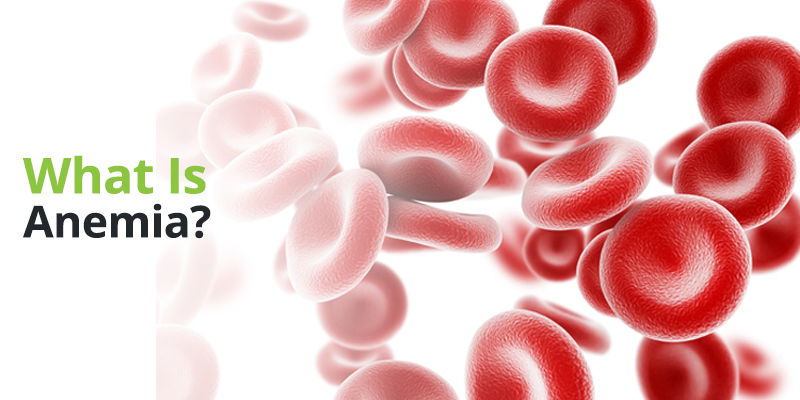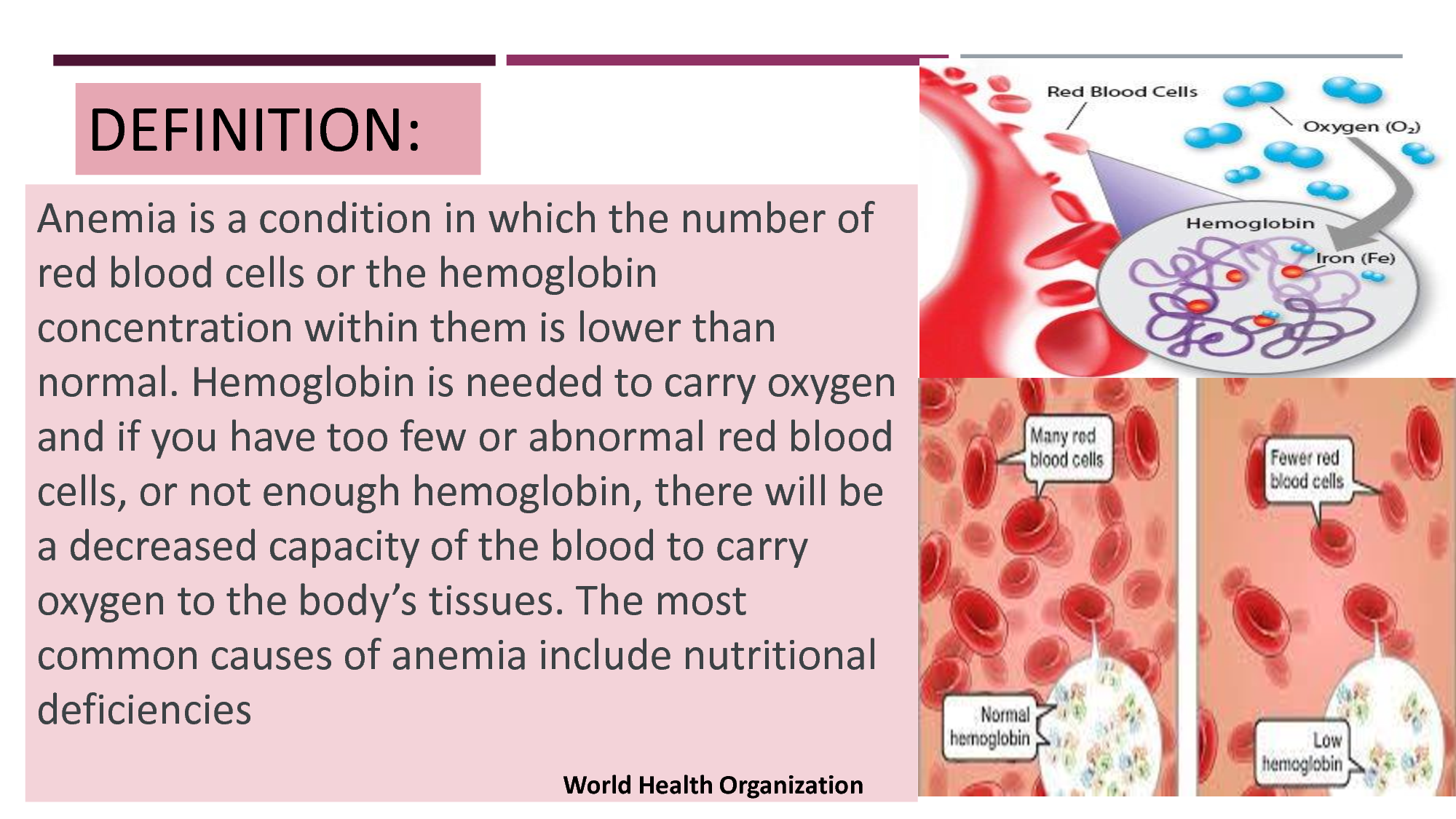
Nutritional Anaemia is a condition in which there is decrease amount of haemoglobin in the red blood cells. This substance is carried inside red blood cells to give its colour and transport oxygen to all parts of the body. Therefore, anaemia will occur if each of the red blood cells contains too little haemoglobin or if the number of red cells is low. Anaemia is one of the causes of deaths in childhood, and one of the commonest conditions affecting children and women, especially pregnancy women across the World.

MICRO-NUTRIENT DEFICIENCIES
Micro-nutrients have been discussed under vitamins and minerals, but the following are worth mentioning again because they have become the focus priority of the Ministry of Health. These include iron, vitamin A and iodine deficiency disorders.

Causes of Nutritional Anaemia
There are many causes of anaemia which may be multiple at any given time or situation, or have a single cause.
1. Anaemia in children can begin when mothers have anaemia before or during pregnancy, and the infant is born with low iron stores. Iron is stored in the liver, spleen, and bone marrow. When these stores are used up and not replenished either through iron absorbed from food, or through iron given in the form of drops or tablets, anaemia develops.
2. Anaemia is often caused by an excess loss of iron through bleeding from menstruation, child birth or accidents.
3. During infection with the parasites, the parasites invade and destroy the red blood cells. This situation reduces the number of the red blood cells to cause anaemia.
4. Parasitic worms such as the hookworm also suck the blood of the individual when he is infested.
5. Deficiencies of folic acid, vitamin A, vitamin C, vitamin B-12, and various minerals which must be present for proper absorption of iron, can also cause anaemia.
6. Only a small percentage of the iron in food is actually absorbed by the body. For it to be absorbed, it must be in a special form. However, substances, such as phytates in whole grains, and tannins in tea, prevent iron absorption. Iron deficiency is common when the diet is mostly grains or starchy roots. Even small levels of iron deficiency in a person affects absorption. The more severe the deficiency the higher the rate o absorption of the nutrient.

Clinical signs and symptoms
While some anaemia gives rise to special signs such as painful swollen fingers as in sickle cell anaemia, it usually shows the following general signs and symptoms.
1. There is a feeling of un-wellness and tiredness or lack or energy.
2. Paleness of the lips, finger nails and toe nails, the palms of the hands, the tongue and the conjunctivae.
3. He may feel nausea or have poor appetite.
4. As the condition progresses, there is a rapid heart rate, a weak soft pulse, and rapid respiration.
5. Cyanosis and cardiac failure with oedema and enlarged liver are present.
6. When there is haemolysis, it shows as a yellowish discolouration of the eyes.
Effects of AnaemiaManagement
1. Breast milk contains low levels of highly absorbable iron that is sufficient until about six months of age. After that, iron supplements should be given to infants every six months until they are five tears of age to maintain normal iron status.
2. Infants born with low birth weights should take supplemental iron starting at two months of age.
3. There should be increased intake of foods containing iron.
4. Iron supplementation should be given to pregnant women. Folate is also given to help with the absorption of iron.
Iron deficiency is often worse by blood loss from the gut caused by feeding infants with formula or other forms of animal milk, or in young children and women by infection.
WATCH THIS VIDEO:

